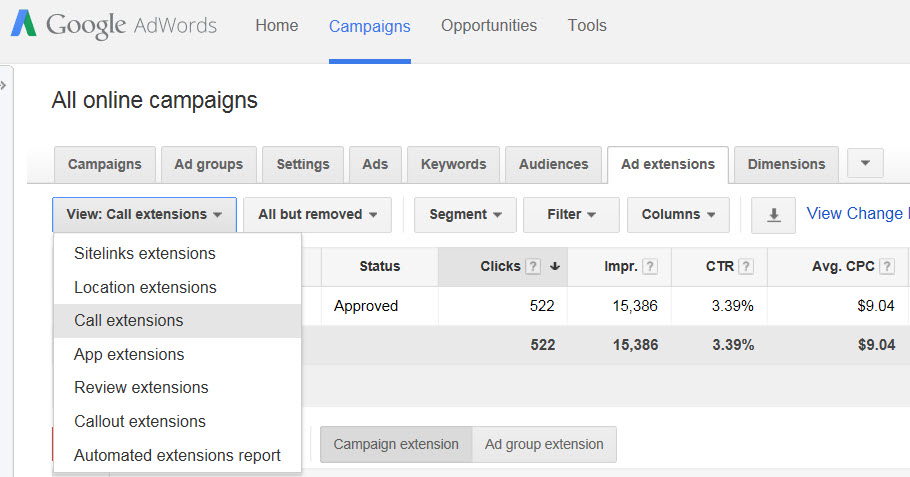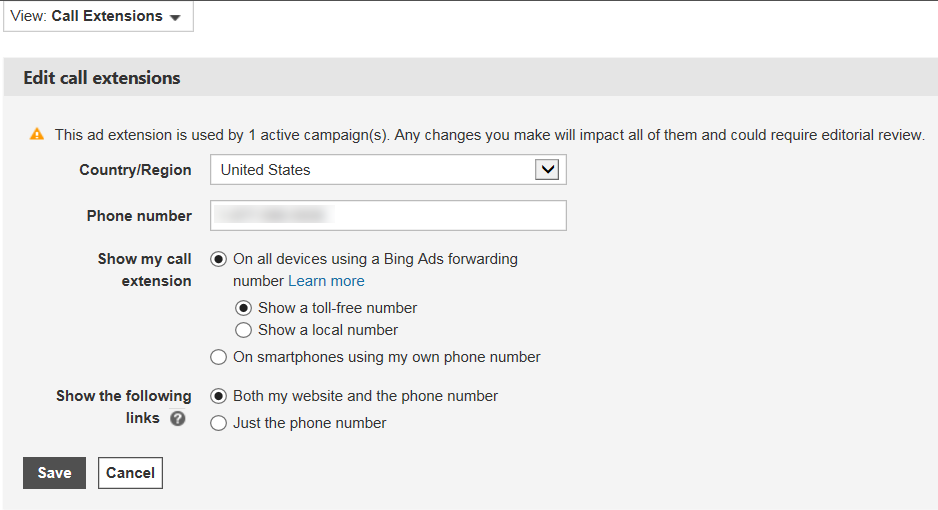The Ultimate Guide to PPC Call Tracking
Over the years, call tracking has evolved to a precise science. It’s now possible to track phone calls down to the keyword level. Here are the call tracking options available to PPC advertisers.
Over the years, call tracking has evolved to a precise science. It’s now possible to track phone calls down to the keyword level. Here are the call tracking options available to PPC advertisers.
It’s hard to imagine a business that doesn’t want to take phone calls from customers. Sure, huge e-commerce entities like Amazon don’t relish getting calls, but they’re the exception rather than the rule. Even if you don’t sell products over the phone, you’re still happy to take calls from people who want to know what time you open or how to get to your store. These callers are likely potential customers who are ready to buy.
PPC success measurements usually focus on online conversions: e-commerce sales, lead form fills, email signups, and even actions like video views. But for some businesses, the majority of their conversion actions happen over the phone. In the B2B world, especially, phone calls are the bread and butter of online advertisers. No one is going to buy a seven-figure business system on the Web. They probably won’t buy it over the phone, either, but they definitely would call to ask questions and start the process. People who call are usually further down the sales funnel; those who fill out an online form are often in the early stages of researching a potential purchase and aren’t ready to talk to a sales rep.
Call tracking used to be nearly impossible to do in PPC. Businesses either had to create special landing pages, or even entire websites, with a different phone number that they could track back to PPC. Or they had to rely on call center reps to ask callers how they got their phone number. Both of these tracking systems are unreliable and error-prone.
Over the years, call tracking has evolved to a precise science. It’s now possible to track phone calls down to the keyword level. Here are the call tracking options available to PPC advertisers.
Both Google and Bing offer call extensions to advertisers. They’re free and easy to set up.
To set up call extensions in Google, go to Ad Extensions and select Call Extensions:

Click the +Extension button and follow the prompts.
Google allows you to use a Google forwarding number or your own number.

I recommend using Google forwarding numbers, as you’ll get reporting data within AdWords telling you which campaigns and ad groups (but not keywords) drove calls.
Bing also has call extensions, and the setup process is similar to Google’s. Choose “Call Extensions” from the Ad Extensions tab:

Then decide which type of extension you want:

Bing has an option that Google doesn’t have: the ability to show a toll-free number or a local number. For local businesses, using a local number may improve your response rate. As with many things PPC, test both to see what works best.
The down side to call extensions is that they only work for calls coming from the ad text itself. Once a user gets to your website, you’ve lost the ability to track them with call extensions. But it’s a good way to dip your toes in the waters of call extensions.
Google recently launched Website Call Conversions, which enables the dynamic insertion of a phone number on your website – for free. Dynamic phone number insertion previously was only available through call tracking providers, so Google offering this feature for free is a big deal for advertisers. Website call conversions go a step beyond call extensions by tracking calls from your landing pages, down to the keyword level. Jaime Smith did a great write-up the benefits of using Website Call Conversions, so check it out to learn more.
The downside is that website call conversions will only track PPC traffic from Google AdWords. If you want details on calls from other sources, you’ll need to use a call tracking provider.
To get the gold standard of call tracking, you’ll need to use a call tracking provider. Call tracking providers offer all the features of website call conversions, with the added bonus of tracking not only all your calls from PPC, but calls from other marketing channels as well.
Most call tracking providers offer dynamic phone numbers. Advertisers are assigned a bank of numbers that correspond to a marketing campaign. Using a snippet of JavaScript code and URL parameters, the call tracking solution looks for a phone number on the landing page, and replaces it with a dynamically-generated number from the number bank. The service can then report on the source, ad group, and keyword driving calls. They’ll also record the originating phone number, time of call, and call duration – invaluable data for advertisers.
With call tracking providers, you have the option of choosing local or toll-free numbers. You’ll also have the option to either record the calls or use provider technology to rate the call quality. Here’s an example from Marchex:

Of course, all this great technology costs money. Most providers charge by the number of phone numbers in your phone bank. Businesses that don’t get many calls will pay less than those that get a high call volume.
Carefully weigh your call tracking options. You might want to start out with call extensions or website call conversions first, and then move to a tracking provider if your business needs warrant. But if you get a lot of calls, a provider might be your best option. We have clients who get 70 to 80 percent of their leads over the phone. In that case, sophisticated call tracking is a must in order to properly optimize campaigns. Some campaigns get few if any online form fills, but a high volume of calls. Judging those campaigns by online conversions alone, they’re underperforming; but when calls are factored in, they’re doing very well.
Here’s an actual example. Based on online conversions, it looks like the display and geo-targeted campaigns are doing poorly.
| Campaign | Total Online Conversions | Cost/Online Conversion |
| Display Campaigns | 23 | $566.70 |
| Geo-Targeted Campaigns | 11 | $985.25 |
| National Search Campaigns | 296 | $453.25 |
But look at call data:
| Campaign | Total Calls | Cost/Call |
| Display Campaign | 28 | $465.51 |
| Geo-Targeted Campaigns | 95 | $114.08 |
| National Search Campaigns | 190 | $706.12 |
All of a sudden, the display campaigns look pretty good, and the geo-targeted campaigns look great.
When you look at all conversions – calls plus online – together, the picture is clear:
| Campaign | Total Conversions | Cost/Conversions |
| Display Campaigns | 51 | $255.57 |
| Geo-Targeted | 106 | $102.24 |
| National Search Campaign | 486 | $276.06 |
Campaigns that might have been de-prioritized or even paused are actually performing better than average. This impacts bid and budget decisions for PPC.
Does your business rely on phone calls? Use this guide to help choose a call tracking solution that’s right for you.